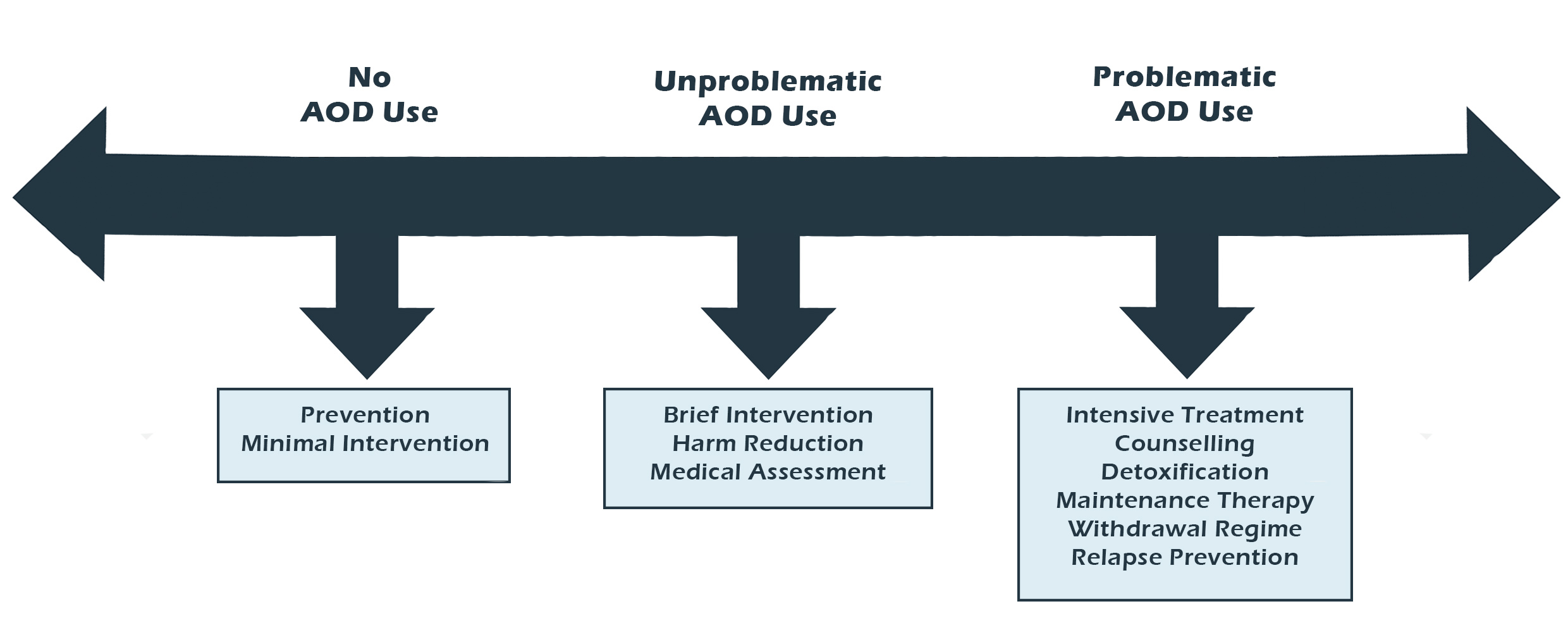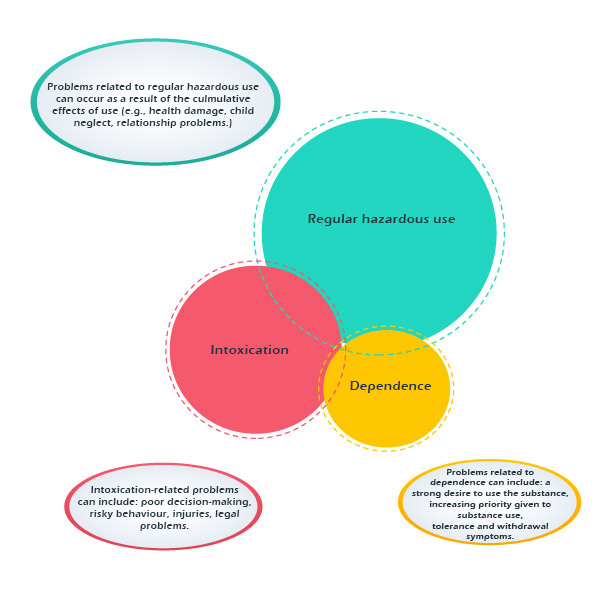Conceptualising Alcohol and Other Drug Issues
It is important to recognise that people use alcohol and other drugs for a variety of reasons including:
- Pleasure
- To alleviate physical or emotional pain
- To enhance performance
- Boredom
- Curiosity.
Alcohol and other drug use occurs across a continuum from no use, unproblematic use, through to problematic use. Each point on the continuum requires different responses as outlined in the diagram below.

Source: Nicholas, R., Roche, A., Lee, N., Bright, S., & Walsh, K. (2015). Preventing and reducing alcohol- and other drug-related harm among older people: A practical guide for health and welfare
professionals. Adelaide, South Australia: National Centre for Education and Training on Addiction (NCETA), Flinders University.
In terms of problematic substance use there are essentially three domains:
- Intoxication
- Regular hazardous use
- Dependence.
Each of these domains can result in widely different harms experienced by both the individual using the substance and the wider community. When people think of alcohol and other drugs and related issues, often the first things they think about are the problems that occur at the more severe end of the scale, such as those associated with dependence. However, issues related to dependence represent a small subset of problems in the community that arise from alcohol and other drug use. That is not to say that those affected by alcohol or other drug dependence, and their loved ones, do not experience significant problems. However, far more people engage in substance use where intoxication and associated problems are the main risk and an even greater number engage in regular hazardous (but not 'dependent') substance use.
The model below, developed by Anthony Thorley in 1982, illustrates the domains of intoxication, regular use and dependence and attempts to demonstrate that regular hazardous use represents the greatest harm to the community by volume. Some people will experience difficulties with two or all three domains of problems.

Source: Thorley, A. (1982), ‘The effects of alcohol’, Martin A. Plant (Ed.), Drinking and Problem Drinking. London: Junction Books.
Another useful model for conceptualising alcohol and other drug use and related harms examines drug use in the context of the characteristics of three interacting factors: the drug being used, the individual using the drug, and the environment in which the drug use occurs. This model, developed by Norman Zinberg in 1984, explains how the experiences of people who use alcohol and other drugs and related harms, can be influenced by the different variables related to the drug, the individual and the environment.
Source: Zinberg, N., (1984). Drug, Set, and Setting: The Basis for Controlled Intoxicant Use. New Haven, Conn: Yale University Press.
